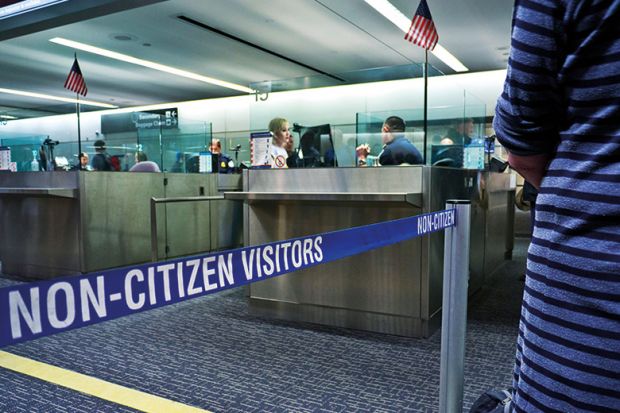The number of international students enrolling in US universities could decline in the wake of Donald Trump being elected as president, academics fear, as figures show overseas recruitment in the country topping 1 million for the first time.
Philip Altbach, research professor and founding director of the Center for International Higher Education at Boston College, said that Mr Trump’s promise to implement “extreme vetting” of Muslims and other immigrants to the US will “deter some students from applying to US schools” and “make it more difficult” for those who do apply.
Professor Altbach added that it is “very likely” that Australia, Canada and other countries offering English-language degree programmes will benefit from the potential rise in prospective overseas students seeking other places to study.
But, he said that the UK is “likely to be in the same situation as the US” as globally it is perceived as “unwelcoming to foreigners”.
Jason Lane, chair of the department of educational policy and leadership at the State University of New York Albany, said “there will likely be many international students who are watching very carefully what the new administration will bring and many who will self-select not to come to the US for study, either because they think they would not obtain a visa or they do not agree with the new political profile of the country”.
“We saw a similar impact after 9/11,” he said.
“There will certainly be a lot of attention on what the Trump administration does in terms of student visas, particularly J1 visas that allow students to work, which Trump has suggested may need to be somehow revised.”
Professor Lane added that the election may result in increased interest in international branch campuses of US and UK universities “as students look for a foreign education without leaving home”, as well as universities in Australia, Canada and European Union countries “where English is broadly spoken and which have aggressive internationalisation strategies”.
The warnings come as the US-based Institute of International Education (IIE) published its annual Open Doors report, which showed a 7.1 per cent increase in the number of international students enrolled in US universities and colleges between 2014-15 and 2015-16.
This brings the total number to 1,043,839 and is the tenth consecutive year of growth, although the rate has slowed from a 10 per cent annual rise last year.
For the second year in a row, the largest growth came from India, at 24.9 per cent, while China remains the top-sending country, accounting for almost one-third or 328,547 of international students in the country.
Despite the fears that Mr Trump’s anti-immigration rhetoric will deter applications from international students, Rajika Bhandari, IIE’s deputy vice-president of research and evaluation, said that student flows are typically affected only when there are “actual shifts in policy” or due to “other tangible factors”.
“International students are actually quite resilient to shifting perceptions of rhetoric,” she said.
She cited the “tightening up of visa-screening procedures” in the US after 9/11 as an example of a policy change that led to a “small drop” in international students, although added that “the numbers rebounded very quickly after that”.
More recently, the “significant drop” in the number of Indian students in the country prior to 2012-13 was “very clearly tied to the strong devaluation of the Indian rupee against the dollar”, she said.
POSTSCRIPT:
Print headline: Trump election could deter international students, academics worry
Register to continue
Why register?
- Registration is free and only takes a moment
- Once registered, you can read 3 articles a month
- Sign up for our newsletter
Subscribe
Or subscribe for unlimited access to:
- Unlimited access to news, views, insights & reviews
- Digital editions
- Digital access to THE’s university and college rankings analysis
Already registered or a current subscriber? Login








